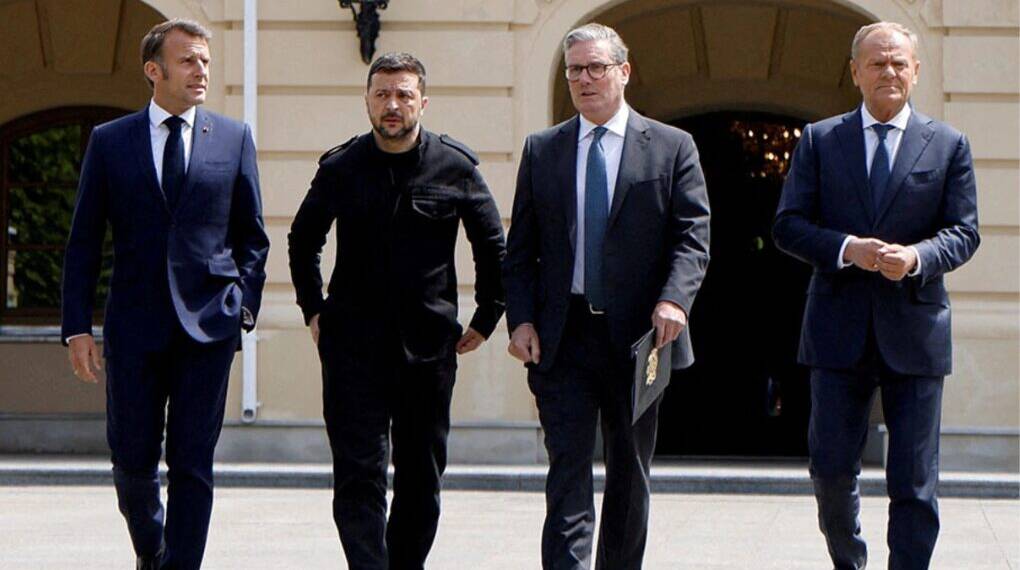The debate over a no-fly zone in Ukraine has resurfaced after Poland suggested that NATO should consider closing Ukrainian skies in response to escalating Russian drone attacks spilling into NATO territory.
In mid-September, following a wave of Russian drones that crossed into Poland and Romania, Polish Foreign Minister Radoslaw Sikorski told a German newspaper:
“If Ukraine were to ask us to shoot down drones over its territory, that would be advantageous for us.”
For Warsaw, the idea is not merely about showing solidarity with Ukraine but also about self-defense. Every drone that enters NATO airspace serves as a stark reminder that the war could spill beyond Ukraine’s borders at any moment.
A Debate Reignited
This is not the first time the issue has been raised. In 2022, Ukrainian President Volodymyr Zelenskyy pleaded for NATO to impose a no-fly zone after Russia launched its full-scale invasion. At the time, Western capitals rejected the request, fearing that such a move would drag NATO into direct confrontation with Moscow.
The concern remains the same today: unlike past no-fly zones in Bosnia or Libya, enforcing one over Ukraine would mean targeting Russian aircraft. And Russia, unlike past adversaries, is a nuclear superpower.
The Changing Nature of the Air War
What has changed is Russia’s strategy. Instead of sending waves of fighter jets, Moscow now relies on swarms of drones and missiles—cheaper, harder to track, and far more difficult to counter.
According to Ukrainian military data, since the start of September alone, Russia has launched:
Over 3,500 drones
Nearly 190 missiles
More than 2,500 aerial bombs
Ukraine intercepts many of these attacks, but not all. Civilian areas and energy infrastructure continue to suffer near-daily strikes.
Former U.S. ambassador to the OSCE, Michael Carpenter, warned that imposing a no-fly zone would transform the war into a “direct confrontation” between NATO and Russia.
The costs are another issue. NATO jets have already scrambled to intercept drones on several occasions. Missiles worth over $1 million each were used to destroy drones costing just a fraction of that—an unsustainable imbalance, analysts say.
Air power expert Justin Bronk of the Royal United Services Institute noted that Western air forces, especially in Europe, are “not equipped to sustainably shoot down such threats.”
Risks of Direct Confrontation
The nightmare scenario for NATO is clear: a NATO fighter jet shoots down a Russian aircraft, Moscow retaliates against alliance territory, and Article 5—the cornerstone of NATO collective defense—is triggered.
Kremlin officials have already warned that any attempt to impose a no-fly zone would be treated as an act of war.
Ukraine’s Daily Struggle
While NATO hesitates, Ukraine continues to bear the brunt of aerial assaults. Its defenses combine mobile missile units, interceptor drones, fighter jets, and advanced electronic warfare systems. Dozens of drones are shot down nightly, but the toll is heavy.
Ukrainian pilots often fly near-continuous missions. One helicopter commander admitted: “Our guys are flying almost 24 hours straight, with only short breaks for refueling. They’re just totally drained.”
The human cost is severe. In one recent attack, 113 drones were launched, 89 were intercepted, yet at least seven civilians were killed.
NATO’s Current Response
Rather than enforcing a no-fly zone, NATO has opted to reinforce its eastern flank. Operation Eastern Sentry was launched last week, with Britain deploying Typhoon jets to Poland and the U.S. pushing for cheaper, more effective anti-drone technologies.
Poland has also begun joint training with Ukrainian forces to learn from Kyiv’s hard-earned experience in countering mass drone strikes.
A Geopolitical Dilemma
The proposal underscores the growing frustration of frontline states such as Poland, Romania, and the Baltic nations, which see Russia’s aggression as a direct threat rather than a distant crisis.
The dilemma is stark:
If NATO refrains from action, Russia could grow bolder.
If NATO imposes a no-fly zone, the risk of global war skyrockets.
For now, Western capitals remain cautious. But as drones and missiles continue to cross into NATO territory, pressure from frontline allies will only grow stronger.
The Bigger Picture
The skies over Ukraine remain a battlefield of attrition, with no easy solution in sight. Each new escalation pushes NATO closer to a breaking point between defending Ukraine and avoiding a wider war with Russia.
As one Ukrainian defense analyst put it: “They can see the threat from Russia is closer than they think.”
Whether NATO can defend both Ukraine’s skies and its own credibility—without stumbling into direct war—remains the defining question of this stage of the conflict.








